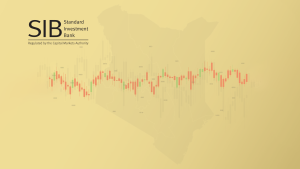Highlights
In the previous week, the best day was saved for last. U.S. markets, as gauged by the S&P 500, were set to snap their two-week winning streak as at the close of trading on Thursday but Federal Reserve Chair Jerome Powell’s prepared remarks on Friday morning at a symposium in Jackson Hole, Wyoming, appeared to open the door to rate cuts, lifting investor sentiment and seeing the index eke out a 0.27% gain for the week. The rally was led by the energy, real estate, financials, and materials sectors while large-cap value stocks outperformed the growth counters. However, the tech-heavy Nasdaq Composite finished the week lower, likely reflecting profit taking amid reemerging concerns about the sustainability of massive spending on infrastructure related to artificial intelligence. In his speech, the Fed chair gave a nod to the difficulties posed by inflationary pressures and emerging weakness in the labour market in pursuing the central bank’s dual mandate of controlling inflation and maximizing employment. He, however, acknowledged that the central bank’s policy stance may need to be adjusted in light of the shift in the balance of risks. The Fed chair noted that his view was that the policy rate was at a restrictive level while also highlighting that the unusual combination of weak labour demand and declining labour supply due to the drop in immigration “suggests that downside risks to employment are rising.” Meanwhile, the S&P Global U.S. Purchasing Managers Index (PMI) indicated that business activity in August grew at the fastest pace so far this year, coming in at 55.4 and marking the 31st consecutive month where the composite PMI came in above 50, the level that demarcates an expansion. However, companies increasingly cited tariffs as a key driver of higher costs with average prices charged for goods and services also increasing at the fastest rate since August 2022. Across the Atlantic, European markets as measured by the pan-European Euro STOXX 600 notched a third consecutive week of gains powered by the dovish comments from the Fed Chair Jerome Powell and further complemented by the sustained rise in business activity for a third successive month. In the U.K., however, annual inflation accelerated to the highest level in a year and half, driven by rising food and airfare costs which dampened expectations of any further rate cuts by the Bank of England in the near-term. In Asia, Japan’s core consumer price index (CPI) increased 3.1% year over year in July, outpacing an expected 3.0% rise but easing from the 3.3% inflation rate recorded in June. While consumer price inflation remains well above the BoJ’s 2% target, the central bank has continued to reiterate that an accommodative stance is warranted because underlying inflation is still below target. Finally, mainland Chinese stock markets also joined in on the bullish cheer as a recent stabilization in U.S.-China trade ties spurred risk-on sentiment. Retail investors have driven the Chinese stock market’s recent rally as cash-rich households seek better returns amid low interest rates and a lack of compelling investment options in China.
Data Highlights
Canada’s Inflation Rate slowed to 1.7% year-on-year, missing the 2% forecast and below the previous 1.9%. The U.K Inflation Rate year-on-year for July came in at 3.8%, edging above both the forecast and the previous 3.7%. Japan’s Inflation Rate for July edged lower to 3.1%, coming in under the 3.3% forecast and down from the prior reading of 3.3%. The Reserve Bank of New Zealand lowered its interest rate by 25 basis points to 3%, in line with expectations.
Week Ahead
Australia Consumer Price Index – Wednesday | U.S GDP Growth Rate – Thursday | Japan Unemployment rate, Canada GDP Growth Rate – Friday.




